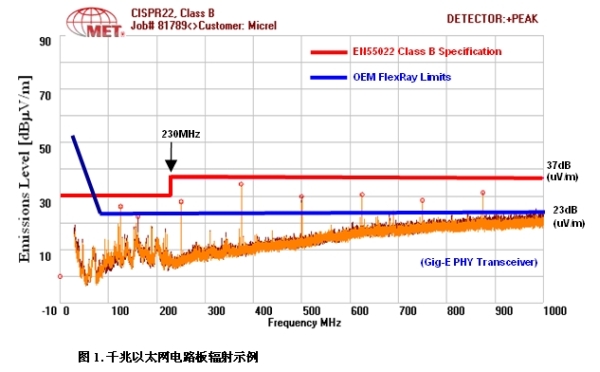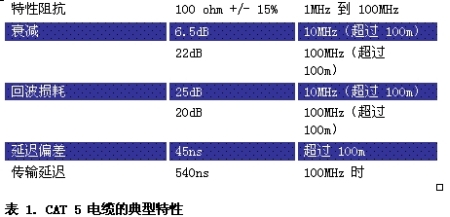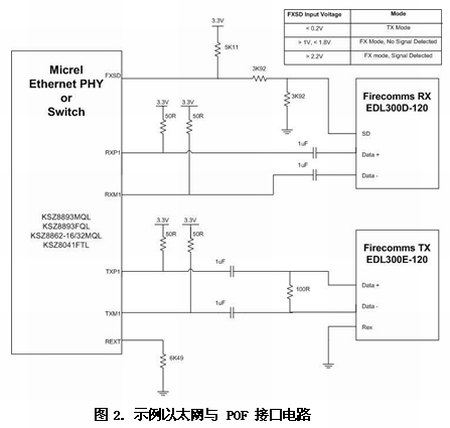Today, Ethernet has officially entered the ranks of automotive networks such as CAN, LIN, FlexRay, and MOST. However, since there are already so many networks, why do we still need Ethernet? What automotive applications can Ethernet be used for? In fact, the answer is very simple, and it can be said that the reason why Ethernet is now dominated in the field of office network. Simplicity and field-proven open standards have greatly reduced the cost of ownership of Ethernet in every application situation, which is part of the reason why Ethernet has recently been favored by factory and home technology users. With the support of many Ethernet vendors, the huge office market and the rapidly expanding consumer market have enabled the pricing level of Ethernet to be much lower than that of any "custom" agreement.
The initial application of automotive Ethernet usually includes an on-board diagnostic system (OBD), which greatly reduces the software download time. There seems to be a general consensus: OBD will shift to an IP-based interface (that is, the physical layer of Ethernet) instead of the slower traditional CAN. Looking to the future, "real-time" Ethernet AVB (Audio Video Bridging) will be able to provide high-performance infotainment network solutions, but the challenges it faces are not simply technical issues. Even when the car is parked at a service station (that is, it is not driving), the OBD application can still operate normally. When a car is driving, car manufacturers need stricter EMI requirements. Ethernet has never been specifically designed for such applications. So, can this technology meet the challenge?
Heat resistance and EMC performance
The industrial control market has proven that Ethernet networks can achieve strong performance under extreme conditions. Most of these applications usually face a large temperature range, severe vibration, high EMC radiation, and dusty or humid environments. The Ethernet device adopts low power consumption and packaging design, so when the engine ambient temperature is raised above + 85 ° C (normal temperature), there will be no heat dissipation problems. For example, Mindray Semiconductor's KSZ8041NL AM single-port Fast Ethernet PHY solution (compliant with AECQ-100 standard) consumes only 175mW in a thermally enhanced 5mm x5mm MLF? Package. The KSZ8041NL series also offers military specification variants that support ambient temperatures up to 125 ° C.
Due to the needs of the industrial and automotive markets, many new generation Ethernet devices have significantly improved ESD (electrostatic discharge) performance. This is a major change in concept, and previous office applications did not pay much attention to ESD ratings. For example, Mindray Semiconductor's KSZ8041 PHY and KSZ8851 controller series have HBM (Human Body Model) ESD ratings greater than 6KV. The evaluation board also shows that it can provide contact ESD greater than 9kV and air ESD ratings greater than 16.5kV without any external overvoltage protection equipment. This exceeds the electromagnetic compatibility (EMC) requirements of general automobile manufacturers, such as the requirements of the BMW Group standard GS 95002.
Electromagnetic radiation
At present, the industry's strict requirements on electromagnetic interference (EMI) performance is one of the most serious challenges that all automotive electrical equipment must face. As the data speed increases, the signal transmission speed becomes faster and faster, which results in higher energy emissions. The first challenge facing the industry is to set the emission limits and required bandwidth of Ethernet technology.
As far as video and camera imaging transmission is concerned, there is still controversy as to whether 100Mbps Fast Ethernet is really sufficient, or whether the data transmission speed of Gigabit Ethernet needs to be advanced. This choice is likely to depend on whether the camera application supports video compression.
Figure 1 shows the typical radiation characteristics of an Ethernet circuit board, using the KSZ9021 Gigabit PHY of Mindray Semiconductor. Not surprisingly, the peak radiation is located at the 125Mbps harmonic position of the reference clock, which exceeds the typical OEM limit (in this case, FlexRay).

To maintain consistency, Ethernet can now use twisted pair, coaxial cable, or plastic optical fiber (POF) as a shielded cable while the car is running. The standard Ethernet RJ45 connector and CAT5 cable have very strong performance and are widely used in many fields (including industrial fields).
However, existing supplier-specific connectors and connectors may still be used (at least initially) in automotive applications. In the future, we will gradually adopt the standardized IP diagnostic interface as specified in ISO 13400. The Ethernet PHY (transceiver) can flexibly use such connectors and cables without significantly degrading performance. Table 1 below lists the typical characteristics of CAT5 cables.

Standard CAN cables have similar characteristics to unshielded twisted pair CAT5 cables. Tests have proved the feasibility of long-term error-free transmission of Ethernet through CAN cables over 100m. The main difference between these two cables is that the CAN cable is only partially specified and does not provide a controlled impedance or twist rate. In this way, EMC performance and signal integrity cannot be guaranteed, so CAN cables are generally not suitable for high-speed data transmission. CAN cables are currently used for Ethernet on-board diagnostic systems (OBD) and flash memory updates. These cables may be disabled during normal driving and can only be activated in a repair shop or production plant.
Examples of cables used for high-speed data transmission (such as LVDS, USB, and Ethernet in automotive applications) include "Leoni cables." The "Leoni cable" uses a controlled 100ohm impedance for shielding and is capable of data transmission up to 1Gbps. The performance index is similar to CAT6, not CAT5. It is actually not a twisted pair, but a four-stranded wire called Stern-Vierer (translated as a star-twisted four-wire).
The first automotive unshielded cable with controlled impedance is Kroschu's FlexRay cable, which can achieve better EMC performance and signal integrity than CAN. Although there are cable types such as twisted pairs and Stern-Vierer, the standard FlexRay cable refers to a single twisted pair. CAT5 provides four-wire twisted pair, all of which will be used for Gigabit networks, and 100Mbps Fast Ethernet only needs to use two of them.

In order to improve reliability, Mindray Semiconductor LinkMD and other cable diagnostic technologies provide solutions that exceed Ethernet defined standards to solve such problems. LinkMD cable diagnostic technology uses time domain reflectometry (TDR) to analyze common problems with twisted pair cables, such as open circuits, short circuits, and impedance mismatches.
Plastic optical fiber (POF) is an alternative to traditional CAT5 copper cable. This physical medium is deployed in the MOST network and has long been known to car manufacturers. The same 1mm LED POF technology from MOST (including the new MOST-150) can also be used for 100Mbps Fast Ethernet transmission over a range of 100 meters. POF has strong performance, light weight, and like other optical fibers, it does not generate electromagnetic noise (because there is no radiation).

However, the disadvantage of using shielded cables or POF is the high cost. Currently, research work is continuing; we look forward to developing methods that use unshielded cables to achieve radiation level requirements (at least meeting Fast Ethernet). Some proposed methods require the use of other modulation techniques, which will produce proprietary inconsistent "Ethernet". This is not in keeping with the unique charm and essence of success of Ethernet: field-proven, interoperable open standards, and low cost. Such methods not only need to achieve the requirements of openness and free access, but also involve a large number of chip suppliers. It remains to be seen whether these methods will be successful.
The ideal solution needs to be able to enhance the performance of standard Ethernet PHY devices to reduce EMI emissions. These improvements, combined with other circuit board and device technologies, provide a realistic opportunity for success, especially the success of Fast Ethernet.
Speaker System,Magnet Speaker Acoustic,Moving Coil Loudspeaker,Metal Frame Mylar Speaker
Jiangsu Huawha Electronices Co.,Ltd , https://www.hnbuzzer.com